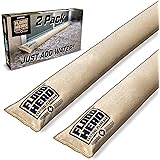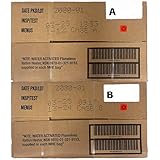Understanding the Basics of Survival Kits
What is a Survival Kit?
Alright, so let’s kick this off with the basics. A survival kit is essentially a collection of essential tools and supplies that can help you stay alive in emergencies. Think of it as your lifeline when things go south. Whether you’re camping, hiking, or facing a natural disaster, having the right gear can really make a difference.
Building a survival kit isn’t just about throwing stuff into a backpack. It’s about being smart with what you pack. You need to consider the environment you’ll be in, the potential risks, and your personal needs. It’s all about planning ahead!
Believe me, once you understand the purpose of a survival kit, the rest just flows. It’s about understanding that preparedness goes a long way and can turn a precarious situation into a manageable one.
Why is Having a Survival Kit Important?
Having a survival kit is crucial because, let’s face it, life is unpredictable. Emergencies can strike without warning, and knowing you have the right gear can provide peace of mind. Whether you’re dealing with a minor mishap or a major disaster, being prepared can save lives.
Moreover, a survival kit helps you stay calm. When an emergency hits, having everything you need makes it easier to think clearly. It gives you the tools to respond effectively, whether that’s starting a fire, purifying water, or navigating back to safety.
In short, having a survival kit is like insurance—it’s better to have it and not need it than to need it and not have it. It’s peace of mind wrapped up in a backpack.
What Should You Include in Your Kit?
Your survival kit should be tailored to your specific needs but generally includes a few must-haves. Think about food, water purification, first aid, tools, and shelter materials. Each of these components can be lifesaving in different scenarios.
It’s also wise to include personal items like medications or specific items for your family members. If you have kids, pets, or anyone with special needs, consider what they might require during an emergency.
== > What if ... Get a FREE Subscription to PREPARE
And hey, don’t forget to check your kit regularly. You want to make sure that food hasn’t expired and that everything is in working order. It’s one thing to pack it away and forget it; it’s another to have it actually ready when you need it.
Choosing the Right Containers
Types of Containers
When it comes to storing your survival gear, the type of container you choose really matters. I’ve found that backpacks work great for on-the-go scenarios, while sturdy plastic bins are better for keeping things organized at home. The goal is to have a container that keeps everything safe and dry.
Also, consider waterproof options. You don’t want rain to ruin your gear when you need it most! A durable, water-resistant backpack or container can make a big difference. It ensures that important items like matches or medical supplies won’t get ruined even in a downpour.
Don’t forget to think about size and weight, too. You want something that you can easily carry if you need to move quickly. Finding the right balance between capacity and portability is key, and trust me, you don’t want to over-pack.
Organizing Your Kit
Keepin’ things neat and organized is vital. I like to use small bags or pouches to group similar items together. For example, one pouch can have first aid supplies, while another could hold fire-starting gear. This way, when you need something, you know exactly where it is.
Labeling these pouches can help too. Introduce a little system that works for you. A simple label maker can make a world of difference. This can save time and prevent any unnecessary fumbling around when every second counts.
Moreover, practice accessing your kit! The more familiar you are with where everything is, the quicker you can react when it counts. Seriously, practice makes perfect in survival scenarios.
Checking Your Kit Regularly
Now that you’ve built your kit, it’s not a ‘set it and forget it’ situation. Checking your survival kit regularly is essential. I usually do this every few months. Look over your supplies and check for expired items.
Also, reassess your situation. Are there new risks in your area? Has your lifestyle changed? As a result, your kit might need adjustments to stay effective. For example, if you recently had a baby or adopted a pet, your kit should reflect that!
Finally, keep your kit accessible. You want to make sure it’s easy to grab in case of emergency. Whether that’s in your car, a closet, or your camping gear, make it a part of your routine to check it regularly!
Know the Essentials
Your Top Five Must-Haves
Alright, time to break it down. If I had to pick just five essentials for a survival kit, I’d go with multi-tools, water purifiers, fire-starting materials, first aid kits, and emergency food supplies. These are the real MVPs that can help in a pinch.
A multi-tool gives you all sorts of utility in one compact package. From cutting to screwing, it’s super versatile. Then there’s water— purifying it is hands down the top priority. Carrying a portable purifier or water tablets can save lives.
Fire is crucial too; it keeps you warm, cooks food, and can signal for help. Packing waterproof matches or a lighter is non-negotiable. And let’s not forget about having a stocked first aid kit—it’s essential for treating injuries until you can get professional help. Emergency food is similarly key; I recommend high-energy bars or dehydrated meals for those unexpected times.
Get Preparedness and Self-Reliance Tips. Subscribe Now!
Understanding First Aid
Knowing how to use the supplies in your first aid kit is just as important as having them. I took a basic first aid course to ensure I can handle minor injuries effectively. It might make the difference between a small injury and a more serious situation when no medical help is immediately available.
Ensure your first aid kit has antibiotics, antiseptics, bandages, and pain relievers. Familiarize yourself with how to treat common injuries, including cuts, burns, and bites. The more you know, the better prepared you’ll be when accidents happen.
Have a friend or family member join you in learning first aid. It’s always beneficial to have at least one other person who knows what to do in case of an emergency. You’ll feel more confident tackling unexpected situations together!
Food and Water Supplies
When it comes to food and water, plan for at least three days’ worth of supplies. You never know how long you may need to rely on your survival kit. Choose non-perishable items like energy bars, dried fruit, and ready-to-eat meals. The goal is to have enough calories to keep you fueled.
And don’t just think about food; having a reliable water supply is a must. Carry a portable water filter or iodine tablets to purify water from natural sources. Remember, safe hydration is vital for survival, so always have a plan!
Lastly, rotate your food supplies regularly. Check expiration dates every few months and replace items as necessary. Nothing sucks more than reaching for food in an emergency only to find it’s gone bad!
Preparing for Different Scenarios
Identify Potential Risks
Understanding what types of emergencies are likely in your area is crucial. For instance, if you live in a region prone to floods or earthquakes, tailor your kit accordingly. Consider the local climate and any natural disasters that could occur.
Research local emergencies and prepare your kit based on those risks. If you know winter storms hit hard in your area, make sure you have supplies to keep warm and safe during those conditions. Knowledge is a key player here!
Also, engage with your local community. There may be resources available that provide insight into preparing for specific situations. The more in tune you are with local risks, the better equipped you’ll be.
Customizing Your Kit for the Season
Different seasons can bring about unique challenges. In summer, for instance, heat-related items like extra water and cooling towels should be a priority. In contrast, winter means adding extra layers, warming packs, and ways to build a shelter against snow.
Adapting your kit to reflect seasonal changes ensures you’re never caught off guard. It’s all about being smart and prepared, rather than reactive. Check in with the changing seasons and adapt your gear accordingly.
Make it a tradition to wanna ‘spring clean’ your survival kit each season. Switch out items as necessary—it’s a fun way to ensure you’re always prepared!
Practice Scenarios
One thing I can’t stress enough is the importance of practicing various survival scenarios. Grab a friend and simulate different emergencies. Practicing how to access your kit and use the supplies can seriously build your confidence when the real deal hits.
Being familiar with your gear makes it less intimidating. You’ll find that it’s easier to think clearly when you’ve practiced how to use your supplies. It’s all about building muscle memory and knowing exactly what to do.
Plus, it’s a fun activity! Make it a group event, include some snacks, and test each other on what to do in certain situations. It’s a great way to bond while also preparing for potential emergencies.
Frequently Asked Questions
1. What should I put in my basic survival kit?
Your basic survival kit should include food, water purification tools, a first aid kit, a multi-tool, fire-starting materials, and emergency shelter items. Think about your specific needs and environment as well.
2. How often should I check my survival kit?
You should check your survival kit every few months to ensure that items are not expired or damaged. It’s also a good time to reassess your needs based on any lifestyle changes.
3. Can my survival kit vary based on where I live?
Absolutely! Your survival kit should reflect the risks associated with your local environment. Consider preparing differently for natural disasters common in your area.
4. What is the ideal container for my survival kit?
A durable, waterproof backpack or plastic bin is ideal for storing your supplies. Choose one that’s easy to carry and protects your gear from the elements.
5. Why is first aid knowledge important for survival?
Knowing basic first aid can mean the difference between managing an injury and it worsening. Familiarize yourself with how to use the supplies in your kit for effective treatment.






